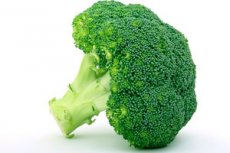Medical expert of the article
New publications
Hypoallergenic diet for breastfeeding moms
Last reviewed: 04.07.2025

All iLive content is medically reviewed or fact checked to ensure as much factual accuracy as possible.
We have strict sourcing guidelines and only link to reputable media sites, academic research institutions and, whenever possible, medically peer reviewed studies. Note that the numbers in parentheses ([1], [2], etc.) are clickable links to these studies.
If you feel that any of our content is inaccurate, out-of-date, or otherwise questionable, please select it and press Ctrl + Enter.

A hypoallergenic diet for nursing mothers is needed not so much by the mother as by the baby, whose digestive system is just beginning to form. In order to avoid dermatitis, diathesis and other skin rashes, it is necessary to minimize the risk of allergens entering the child's body. It should be noted that the problem of allergies in a newborn is not directly related to the fact that there is a nursing mother, but rather to how well the mother's body perceives food and digests it. That is, if the mother has poor digestion, even harmless oatmeal can cause an undesirable reaction in the child in the form of allergic rashes or colic. Thus, all antihistamines used in the treatment of allergies in a child only neutralize the symptom, and the solution to the problem lies in normalizing the digestive process in the mother.
A hypoallergenic diet for nursing mothers involves switching to a specialized diet at the first symptoms and suspicions of allergies in the baby. The menu includes the following hypoallergenic products:
- Vegetables of white and green color, carrots, beets, tomatoes are excluded.
- Green fruits, all pink, bright red fruits and berries and citrus fruits are excluded.
- Gluten-free cereals – rice, corn grits or flour, buckwheat. Oatmeal is excluded, which contains avenin, similar in properties to gluten.
- Gluten-free pasta – made from durum wheat.
- Gluten-free sweet products – biscuits, pretzels, marmalade.
- Poultry meat is excluded. Beef and white river fish remain.
- It is better to make all fermented milk products at home (sour milk, kefir or yogurt fermented with special dry mixtures).
The basic rules within which a hypoallergenic diet for nursing mothers is compiled are as follows:
- The entire diet should consist only of hypoallergenic products, even if neither the mother nor the baby has any manifestations of allergies. Such products include - bran bread (preferably rye and dried), gluten-free grain porridges - rice, buckwheat, white and green vegetables, which must be soaked for at least half an hour before eating or cooking.
- Locality rule. All products, including vegetables and fruits, should grow in the area where the mother and child live. Exotics, although attractive, are not safe. Citrus fruits and bananas brought from far away should be excluded from the menu.
- It is advisable to combine protein foods with the use of biokefirs, bioyogurts, made by yourself. It is better to buy starters in pharmacies in dry form.
- All dishes must be boiled or baked. Alternatively, steamed food can be used.
Allergic reactions in young children are mainly caused by products containing specific amines - histamine and tyramine.
What should be excluded from the diet to avoid provoking an allergic reaction in a child?
- Histamine is found in sauerkraut, ham, all canned seafood, tomatoes and pork liver.
- Tyramine is found in elite varieties of cheeses: Camembert, Cheddar, Roquefort, Brie. Tyramine can also be found in processed cheeses. Brewer's yeast and pickled sea fish - herring, mackerel, horse mackerel - contain large amounts of tyramine.
The main list of “prohibited” products when following a hypoallergenic diet:
- Sea fish, seafood, caviar.
- Hard cheeses, especially sharp ones.
- Whole milk, store-bought kefir, yogurts with additives.
- Eggs and dishes containing eggs.
- Wheat, millet, oatmeal, semolina.
- All smoked products without exception, including sausages, hot dogs, fish and cheese.
- All pickled and canned products without exception, including juices.
- Condiments – ketchup, mayonnaise.
- Brightly coloured vegetables, especially red, as well as sorrel and eggplant.
- Fruits that are brightly colored. A pale green, locally grown apple is preferable to an exotic, eye-catching fruit.
- Drinks containing preservatives and colorings, carbonated water.
- Chocolate, products containing cocoa, honey.
A hypoallergenic diet for nursing mothers is very important in the first two to three months after the baby is born, as this is the period when the enzymatic function of the baby's gastrointestinal system is formed. If the baby's condition does not cause concern within three months, other previously prohibited products can be gradually included in the mother's menu. Each new dish should be introduced for two weeks, while it is necessary to monitor the reaction of the baby's skin to the new product coming to him through breast milk.
 [ 1 ]
[ 1 ]

